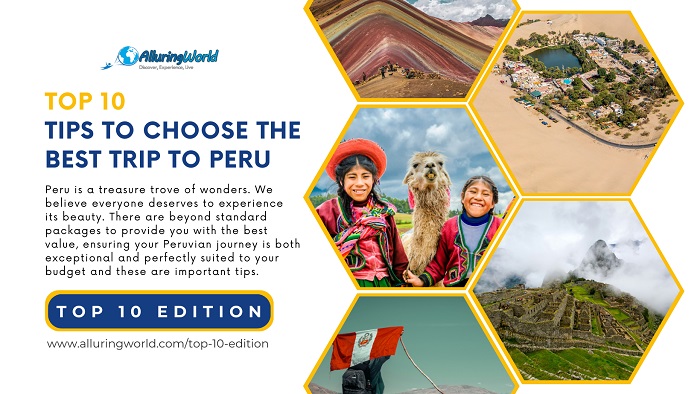Peru is a country filled with ancient history, breathtaking landscapes, and vibrant culture. From the mystical ruins of Machu Picchu to the diverse Amazon rainforest and the colorful streets of Cusco, there is so much to explore, and planning the perfect trip to Peru requires careful consideration of destinations, seasons, and experiences to make the most of your journey. There are many Peru vacation packages that will show you this South American nation, but these top 10 tips will help you choose the best trip to Peru based on your interests, budget, and travel style.
- Decide on Your Must-See Destinations
Peru has a variety of incredible places to visit, so narrowing down your priorities is key. If history fascinates you, Machu Picchu and the Sacred Valley should be at the top of your list. Nature lovers may prefer the Amazon rainforest, while those looking for adventure might head to the Andes or the desert oasis of Huacachina.
- Choose the Best Time to Visit
Peru has two main seasons: the dry season (May–October) and the wet season (November–April). The dry season is best for trekking and outdoor activities, while the wet season offers lush landscapes and fewer crowds. If you’re visiting the coast, summer (December–March) provides warm temperatures, making it ideal for beach destinations like Paracas.
- Pick the Right Way to Visit Machu Picchu
Machu Picchu is a highlight of any trip to Peru, but how you get there makes a big difference. If you enjoy hiking, consider the classic Inca Trail (which requires advance booking) or alternative treks like the Salkantay or Lares treks. For a more relaxed journey, take the scenic train from Cusco or Ollantaytambo to Aguas Calientes.
- Consider Altitude Acclimatization
Many of Peru’s top attractions, including Cusco (3,400 m / 11,150 ft) and Lake Titicaca (3,812 m / 12,507 ft), are at high altitudes. Plan time to acclimate by spending your first few days in lower-altitude areas like the Sacred Valley before heading to Cusco. Staying hydrated and avoiding strenuous activities on your first day will also help prevent altitude sickness.
- Plan for Cultural Experiences
Peru’s rich cultural heritage is reflected in its traditions, festivals, and local markets. Time your trip around events like Inti Raymi (Festival of the Sun in June) or experience the vibrant textiles and crafts of the Andean villages. Visiting indigenous communities in the Amazon or on Lake Titicaca’s floating islands offers a deeper cultural connection.
- Don’t Overlook the Amazon Rainforest
Beyond the mountains, Peru is home to one of the most biodiverse regions in the world. A trip to the Amazon offers the chance to see exotic wildlife, cruise along the rivers, and stay in eco-lodges. Choose between Iquitos in the north (accessible only by boat or plane) or Puerto Maldonado in the south for easier access from Cusco.
- Try Local Peruvian Cuisine
Peru is a culinary hotspot, with world-famous dishes like ceviche, lomo saltado, and causa. Don’t miss the opportunity to try traditional Andean foods like alpaca, guinea pig (cuy), and quinoa-based dishes. In Lima, visit local markets or top-rated restaurants to experience the country’s diverse flavors.
- Decide Between Independent or Guided Travel
Peru is a great destination for both independent travelers and those who prefer guided tours. If you enjoy flexibility, you can explore on your own using buses and domestic flights. However, guided tours offer expert insights, especially for historical sites like Machu Picchu, and can be more convenient for remote locations like the Amazon.
- Pack Smart for Different Climates
Peru’s geography ranges from coastal deserts to high-altitude mountains and humid jungles, so packing appropriately is essential. Layers work best, including warm clothes for the Andes and light, breathable fabrics for the rainforest. Comfortable hiking shoes, rain gear, and sun protection are also must-haves.
- Set a Budget and Plan Accordingly
Peru can be a budget-friendly destination or a luxury experience, depending on your travel style. Hostels, local buses, and street food make it affordable, while luxury hotels, fine dining, and premium train rides offer high-end comfort. Setting a budget early helps balance your experiences while making the most of your trip.
In conclusion, choosing the best trip to Peru depends on your interests, preferred travel style, and the time you have available. Whether you’re drawn to ancient ruins, natural wonders, or cultural immersion, Peru has something for every traveler. By planning carefully and following these tips, you can create an unforgettable journey that captures the essence of this diverse and historic country.

